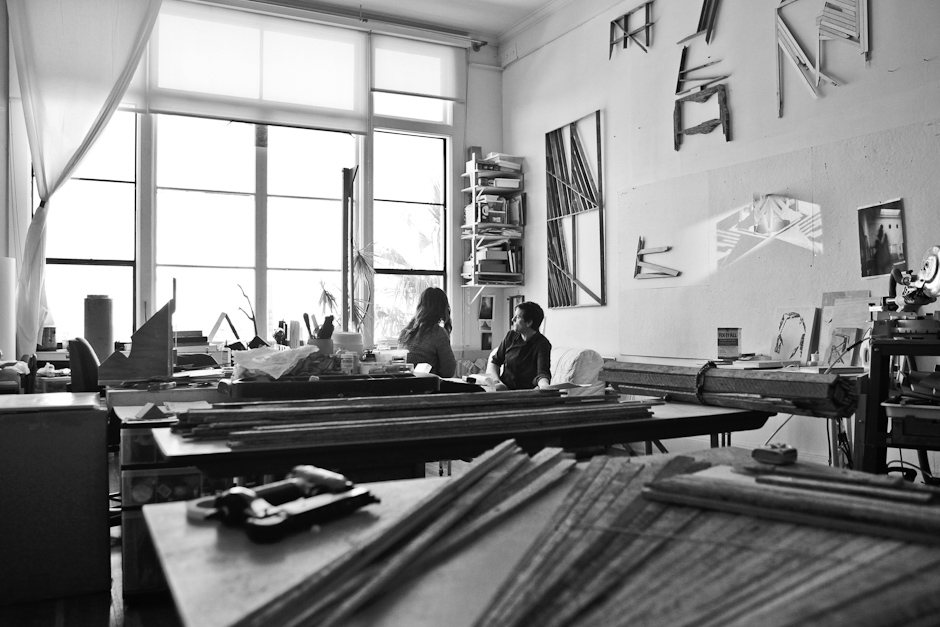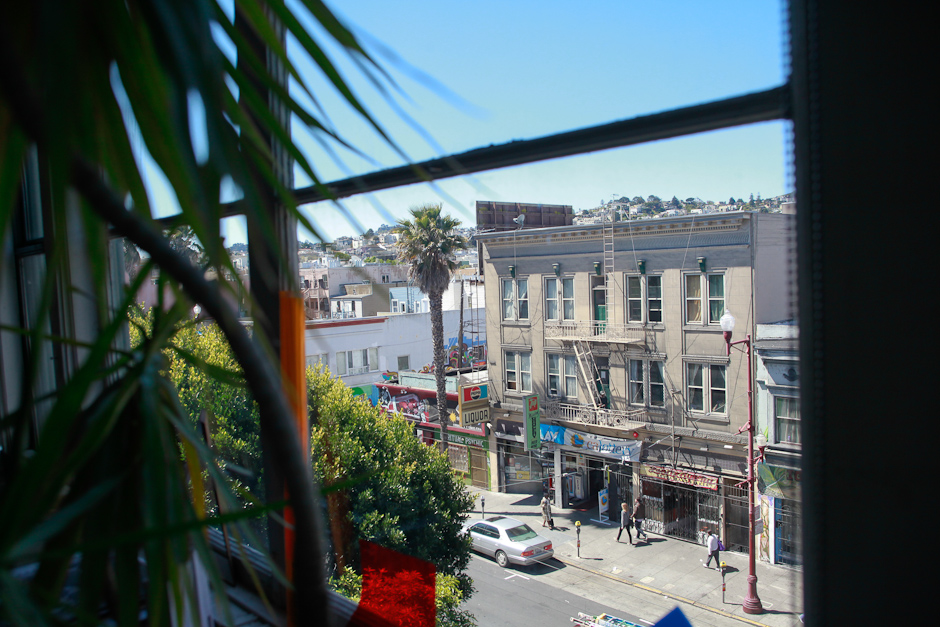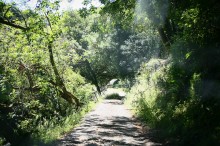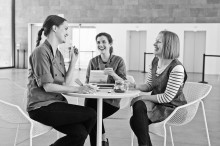
Andy Vogt
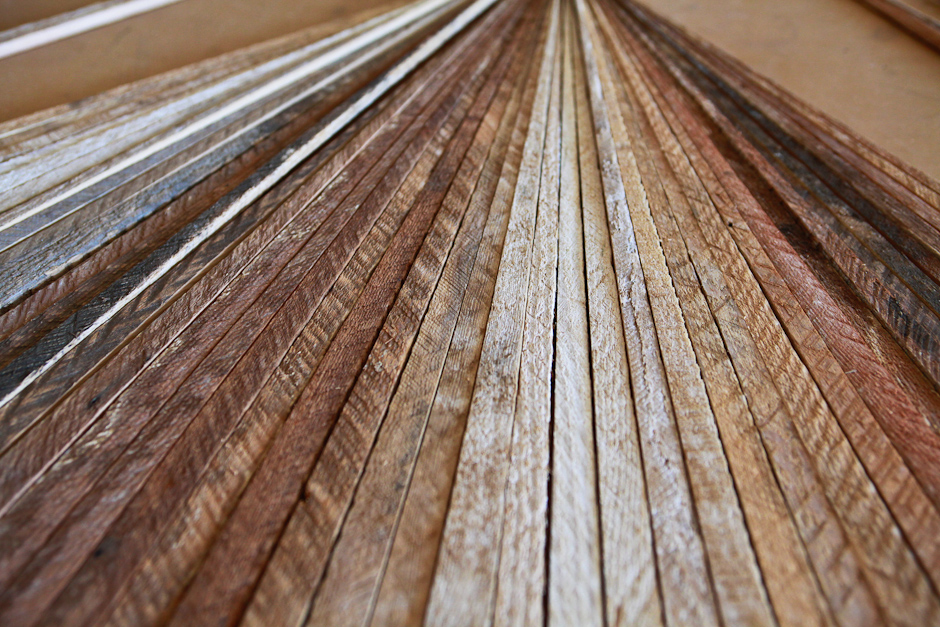
Anything can be imagined. That is something I knew to be true as a child—when the world still felt too big and there was so much I didn’t understand. But then you grow-up and things are explained, and everything that surrounds you becomes more knowable, more recognizable, and somehow fixed. But I’ve come to realize anything can be RE-imagined and the ability to do this in the world despite established meaning is often at the heart of art making.
Andy’s work takes the most common of throwaway materials and reworks its purpose and form— he finds and retrieves laths, long thin pieces of wood used in walls and ceilings to support plaster, from dumpster bins and employs them to construct sculptures that ask us to reconsider material and space and challenge the way we arrive at recognition and understanding. In Andy’s work a piece of lath becomes an endless line, a way to draw with dimension, texture, and a distinct tonal palette– his often site specific pieces are composed of intersecting, angled planes of wood that intervene and interact with pre-existing architecture and natural light, lending us a unprecedented frame to see our environment anew.
When talking with Andy he mentioned that in many ways he sees his work as premonitions of decomposition; that there is an inescapable awareness of structures in shifting states, in degradation, in collapse. A palpable eeriness resides in his forms, giving rise to feelings of uncertainty and uneasiness— feelings that so often emerge when there is a convergence of both the known and unknown. The concept of the familiar giving rise to the unfamiliar is considered in Sigmund Freud’s 1919 essay “The Uncanny”— in which he identifies the uncanny as “that class of frightening which leads back to what is known of old and long familiar.” By re-considering architectural possibility and dumpster finds, Andy’s work encourages material and space to take on new incarnations, yet without allowing them to fully shed their previous histories. This is what I find most powerful about Andy’s work— that he makes room for the ghosts; that in re-imagining he also simultaneously reveals what once was.
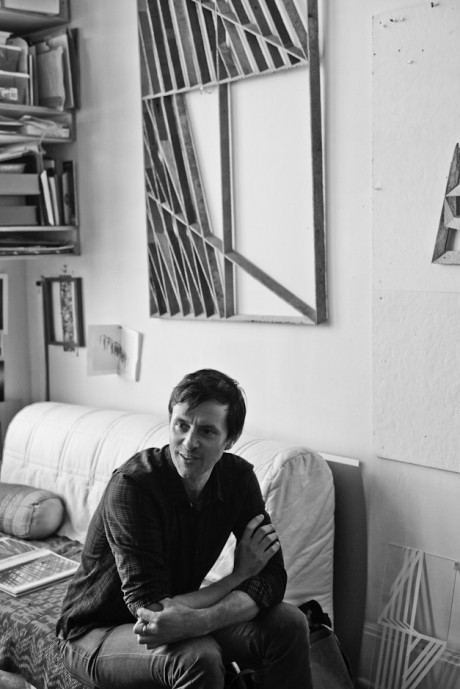

How would you describe your subject matter or the content of your work?
I’m interested in the overlap between the imaginary plane of drawing and the physical effects of building. I’d like my work to sort of hover between these two realms. Drawings or plans are a kind of idealized vision of a thing. In reality the temporary nature of the thing or structure is immediately evident as it starts to break physically, or to simply drift away from its original intended purpose/context. I think of something like a failed urban renewal project— the origins were crisply defined on the drawing board, but its lasting effect is sort of murky or unknown. I think there is a kind of comfort in knowing that it will all deteriorate in the future. I’m currently inspired to somehow fossilize my drawings and compress my installations down to the thinnest possible dimension.

What mediums do you work with?
In my sculpture I mostly use found wood but I’m starting to add elements of paint, plaster and other materials used in architecture. I’ve also started to use light and the effects of light as part of my works.
Before working with sculpture I was doing other creative things; mostly I was involved in music and photography… it wasn’t until I discovered this discarded, distressed wood that I began to see physical forms taking shape in the tangled chaos of the dumpster.
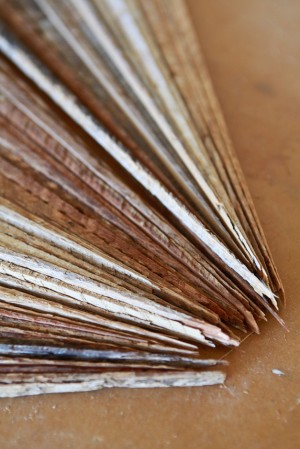
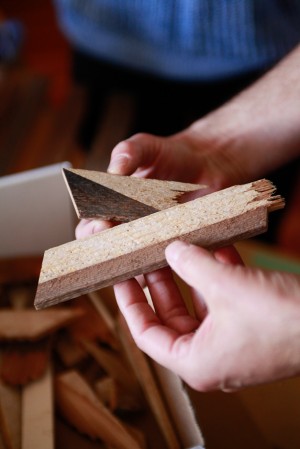

You use scavenged materials, how do you go about finding and choosing what to utilize?
I’ve been collecting construction materials from dumpsters for years. In particular lath, the thin wood strips that form the foundation for plaster inside old walls. When an old house is remodeled these strips (and the plaster) get ripped off the studs and end up in the trash. If I’m lucky I can grab some before everything else from the renovation gets dumped on top of it.
I’ve stockpiled loads of lath so now I’m a little picky when it comes to getting more. I’ll only take the stuff if it’s unbroken and interestingly colored. For instance really dark or really white or a rich orange/yellow tones are hard to find whereas brownish red is everywhere. Some of that is due to what kind of wood was used to make the lath or where in the house it had been used… inside a wall versus inside a ceiling.
Since I use the material as my found palette, color is something I’m always looking for in my bundles of the wood. I try to sort it by color but each piece has two sides, one that held the plaster and one that didn’t. The plaster side is whitish and the other side is darker. So I’m constantly comparing the two sides and trying to decide which one I like better and how to sort it. I make bundles of ‘yellowish’, ‘dark gray’ etc… It can be a torturous process to hunt for that perfect piece.
The availability of this found material and its limitations were the inspiration for me to get back into making art. Discovering it was sort of like learning a new language.
Fortunately for me here in San Francisco there is so much lath locked away in suspended animation behind all these pre-1950’s plaster walls— I’ll never run out, unless people stop renovating buildings.


Much of your work is site-specific and about altering a viewer’s interaction with their surroundings, can you briefly summarize how you begin work at a new location?
When I’m working in a new venue I try to spend as much time as I can in the space before starting a project. Usually it’s a matter of visiting the site as much as possible and photographing it. I make sketches and sometimes I’ll create a scale model of ideas I’m considering. I often use string to get rough ideas into the real space quickly— I’ll tape or pin the string to the walls and floors and draw lines in the space that show where and how a sculptural installation will connect with or interrupt the architecture. It’s an extension of my line drawings that I scribble in my sketchbook.
I’ve been fortunate to work in a few places where I’ve actually spent some time in advance of showing. “Sustained Decay” which was produced in collaboration with Josh Churchill at Adobe Books’ back room in 2007 was the first site -specific installation that I had taken on. The space had so much history and so many artists and supporters had been part of it was in a sense a kind of sacred site. Our project tried to further that feeling while allowing the decayed under-layer of the walls and ceiling to be a central part of the experience.
Besides your art practice, are you involved in any other kind of work?
I have worked as a prop/model maker and art director on television, film and still photo projects for many years. Recently I managed the production of a scale model of the 1969 exhibition “When Attitudes Become Form” for the Wattis Institute at California College of Art here in SF. I worked with a small crew of local SF artists making miniature 1″ scale versions of forty conceptual works from the late 1960’s. It was sort of a kunsthall doll house.
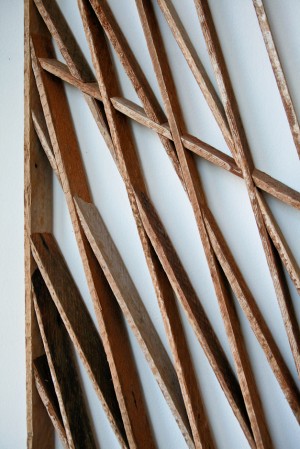
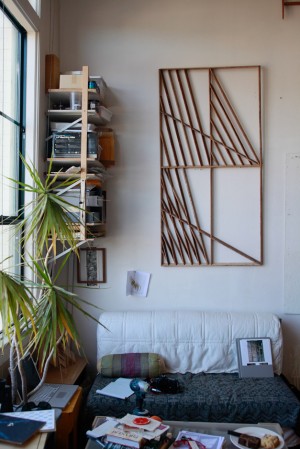
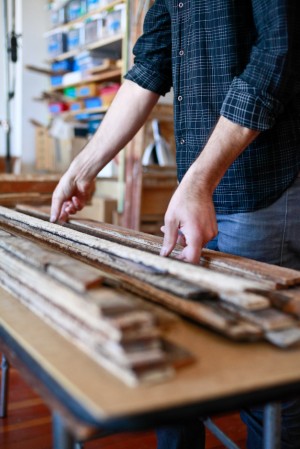
What are you presently inspired by— are there particular things you are reading, listening to or looking at to fuel your work?
The Lebbeus Woods retrospective at the SFMOMA was an inspirational show— I think I went back four times. There is an undeniable genius in his unhinged vision of an anarchic architectural dreamscape rendered in such competent and heartfelt drawings and models.
I have a few books that I’m grazing but mostly I’ve been inspired by the materials that I use and their mutated journey from one artwork to the next. For example during ‘Sustained Decay’ (at Adobe Books) I had to cover a missing window to keep the pigeons out of the space. In the process I ended up creating a piece that interacted with and interrupted the light. That experience led to my Southern Exposure installation, which connected directly to the windows of the gallery and created changing shadow patterns on the floor. This process of compression or flattening of a volumetric sculpture using light has inspired a whole new body of recent work.
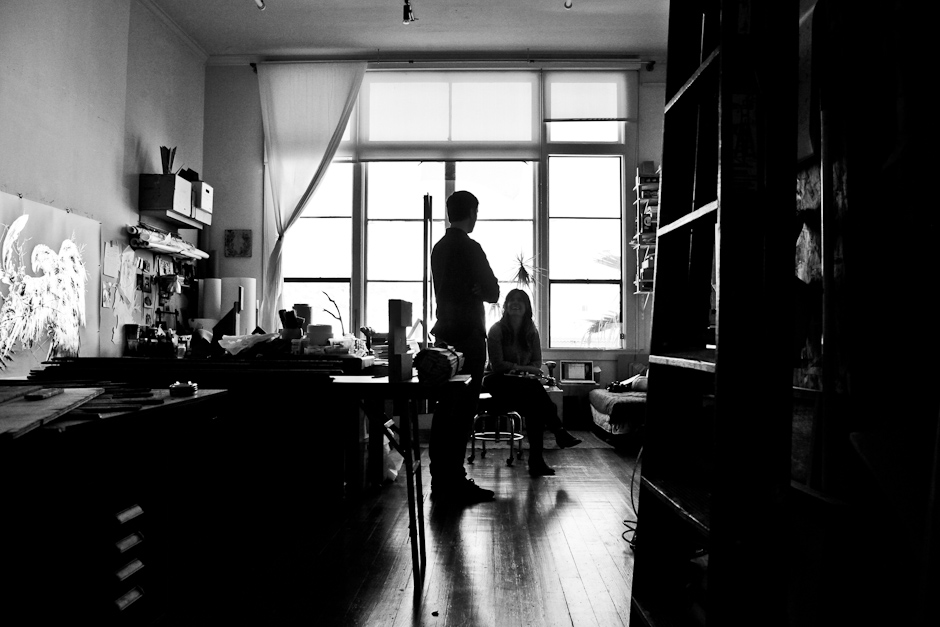
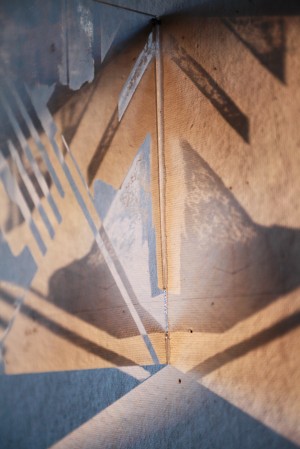
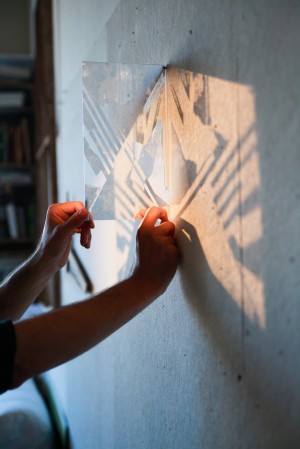
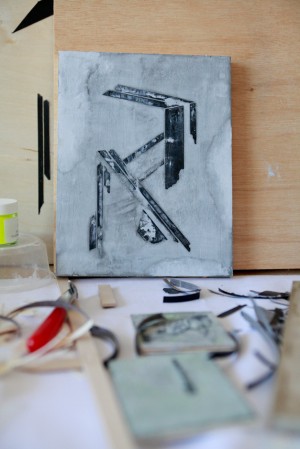
What does having a physical space to make art in mean for your process, and how do you make your space work for you?
I’ve been renting a studio space since 2005 and now it’s hard to imagine not having one separate from my living space. I share my studio with Sarah A. Smith and we collaborate on projects there in addition to making our own work. The space is big enough to allow us to have multiple projects going at the same time but still presents storage challenges, especially with an arsenal of salvaged wood. The studio is on the 4th floor and faces west so we get strong afternoon sun which in addition to turning the place into a sauna, has helped me develop ideas about how to involve light in my sculptural process.
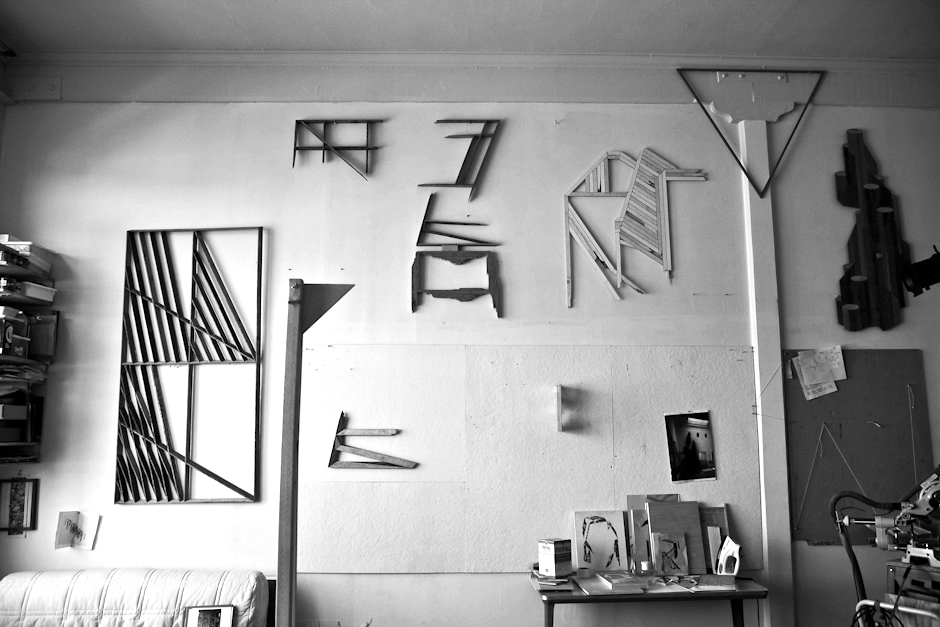
Is there something you are currently working on, or are excited about starting that you can tell us about?
I will be a part of a group show at Root Division that opens November 6th (reception on the 9th). I’m collaborating with Nicolas Torres on a piece that examines the recent closing of the 16th Street location of Adobe Books and the unearthing of a sculpture that I left inside the gallery walls after my show there in 2007. When the bookstore and gallery closed I decided to exhume my piece from the wall and Nicolas made a video about the last day at the store. I like the cyclical aspect of using material from one wall to make my piece, which becomes part of the gallery wall that is then ripped out and moved to another wall.
Do you see your work as relating to any current movement or direction in visual art or culture? Which other artists might your work be in conversation with?
I don’t see my work as directly connected to a movement, but it’s definitely connected to the landscape of San Francisco and the artists who work here. Moving here around 2000 and being surrounded by many productive artists (like Christian Maychack, Leslie Shows and Jim Gaylord to name a few) was inspiring enough to encourage me to make my early work. San Francisco in general has been an inspiring and supportive environment.
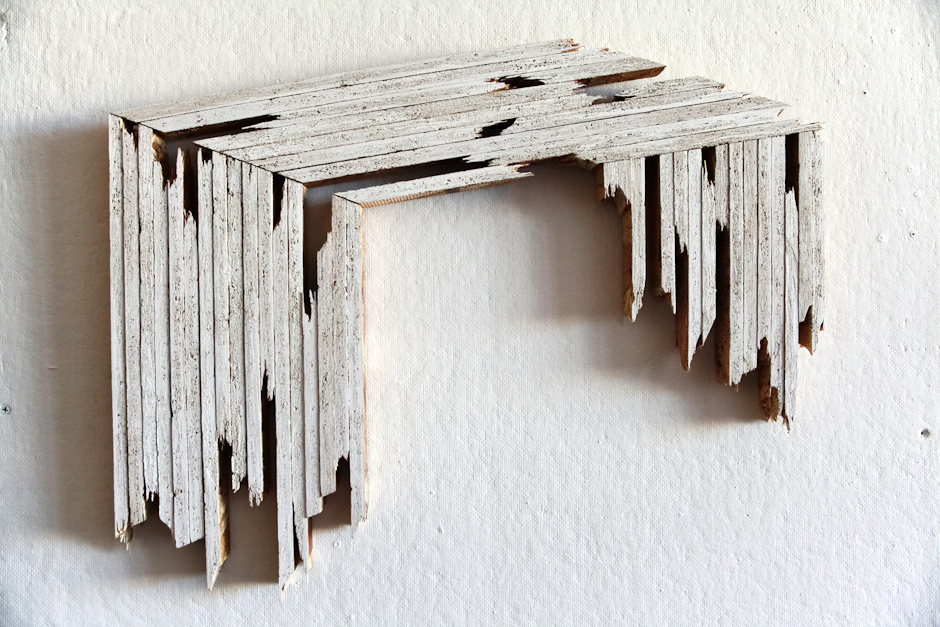


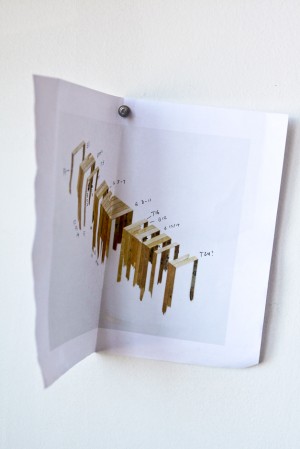
How do you navigate the art world?
I try to take as many opportunities as I can to develop and show new work, but I also try to help out and support the excellent non-commercial venues we have here like Southern Exposure and Headlands Center for the Arts. As an artist you have to make work, but you also have to get out there and support the folks who are keeping the infrastructure of the art scene alive.
Are you involved in any upcoming shows or events? Where and when?
My work will be on display for the inaugural show at The Battery— a new venue in Jackson Square that opens this fall.
And I’ll be a part of the group show “Oroborous Project”— November 6th-23rd, 2013 at Root Division in the Mission District.
To see more of Andy’s work:
www.andyvogt.com
Eli Ridgway Contemporary Art: www.eliridgway.com
